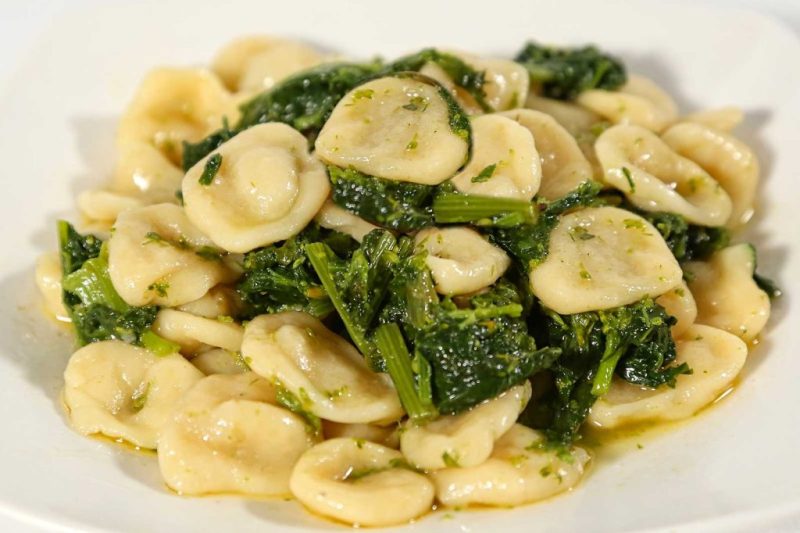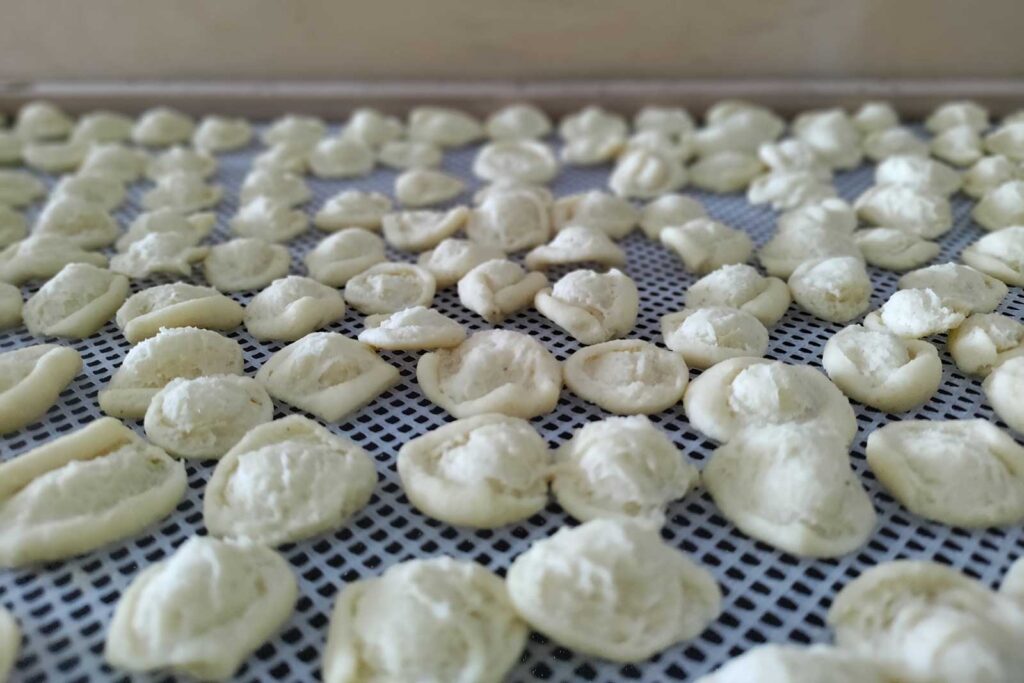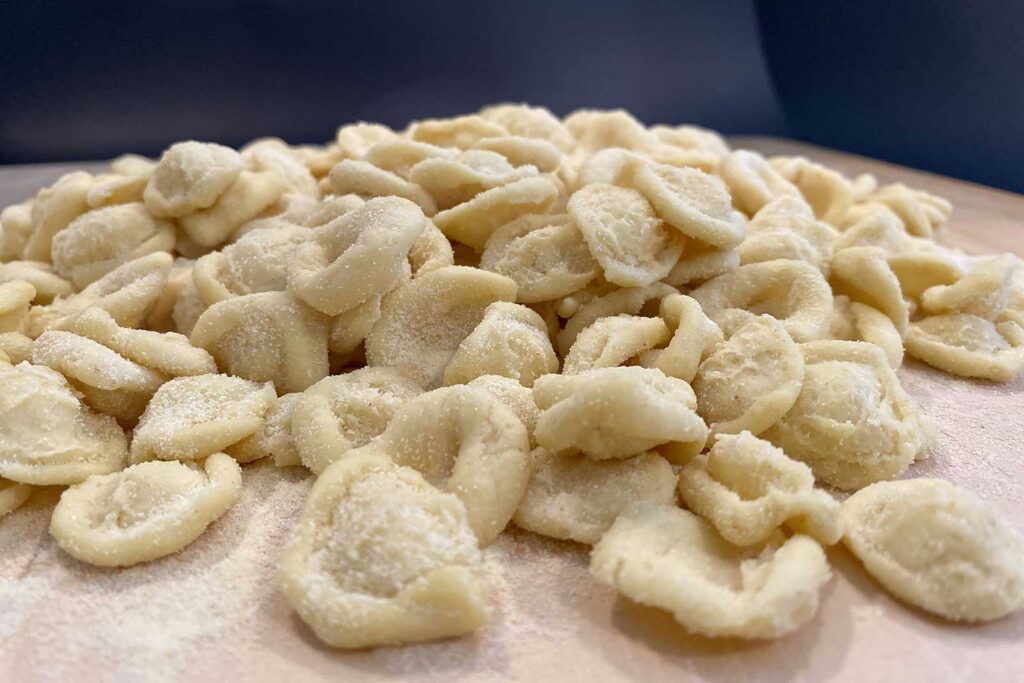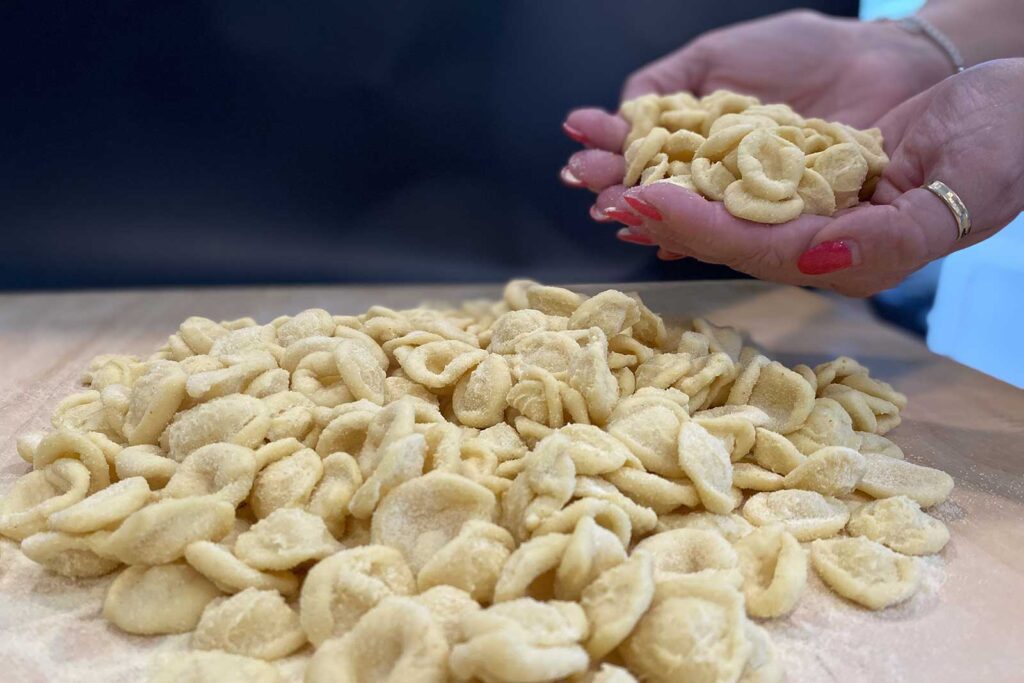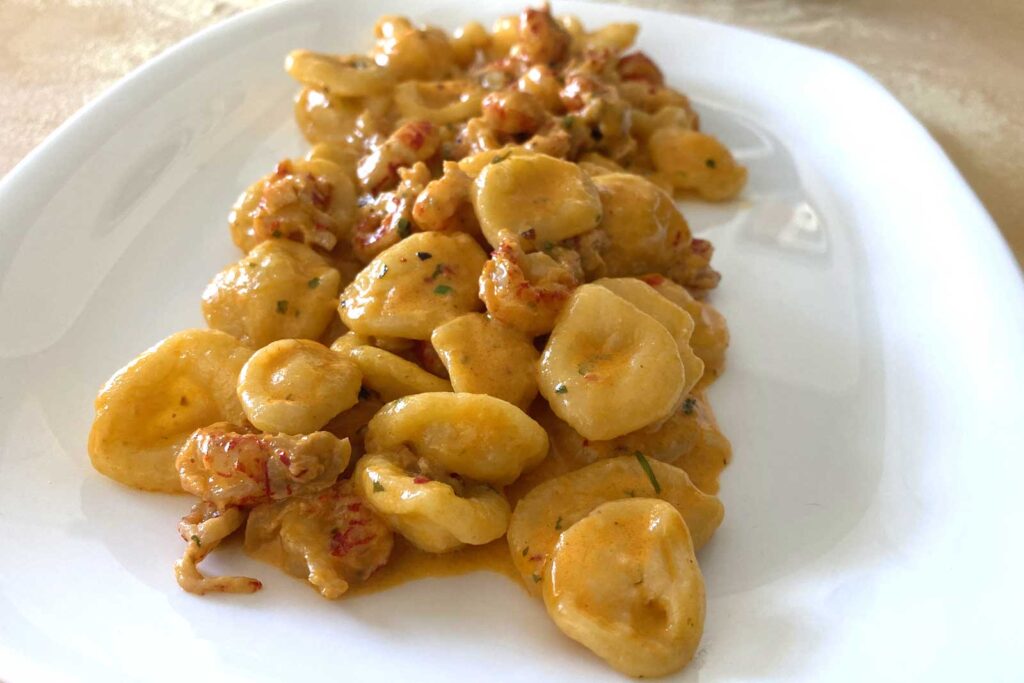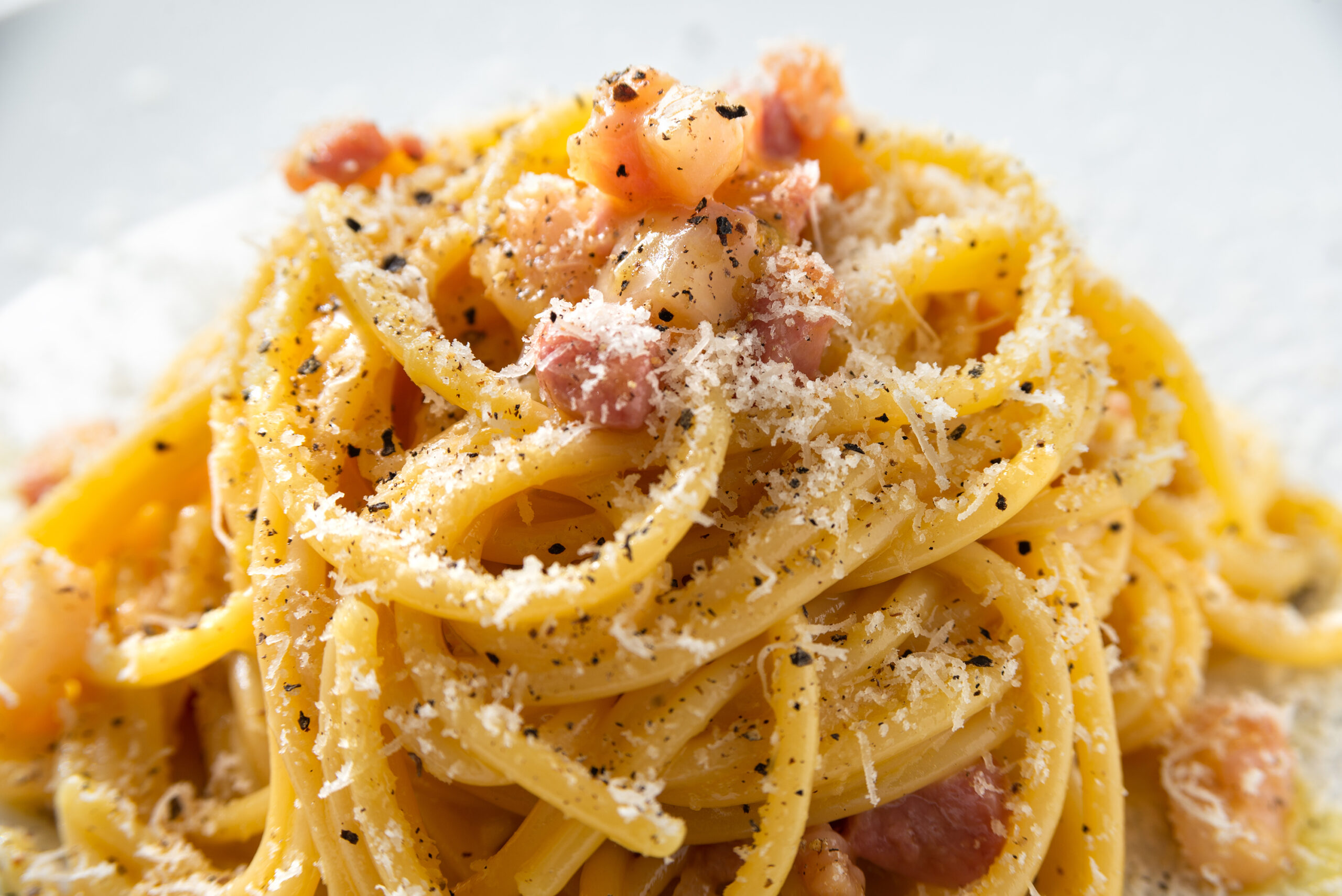The orecchiette, the format of fresh pasta symbol of the typical Apulian cuisine, are famous for their characteristic round and concave shape, smooth on the outside and rough and wrinkled on the inside, which is reminiscent of a small ear, and for their ability to capture and collect the sauce well. Traditionally this pasta is made by hand, with a simple dough made with durum wheat semolina flour, water and salt which is worked on large wooden cutting boards and modeled with your hands and with a smooth blade knife.
Protagonist of one of the most representative and most famous local dishes in the panorama of Italian regional cuisine, or orecchiette with turnip greens, this type of pasta seems to have been invented between 1200 and 1500. Although its origin is still wrapped in the mystery, let’s discover the various theories, between history and myth.
The birth of the orecchiette is between Puglia, Provence and ancient Rome. As there is no official documentation attesting to its origin, the hypotheses concerning the invention of the orecchiette are based mainly on stories, anecdotes and local traditions that have been handed down over time.
Their origin is a mystery, in fact there are no documents attesting to their birth. The more remote one dates back to ancient Rome, because Varrone speaks of the “lixulae”, a type of pasta with a round shape with a concave center, obtained with flour, water and cheese.
Even the Counts of Anjou of Provence would seem to love an original medieval French recipe, which consisted of a fresh pasta called crosets , prepared with durum wheat flour and water and with a similar shape of hollow discs in the center but thicker, larger and less refined ; this form was conceived because it is easy to dry and to preserve during long periods of famine, but hypothetically it has as its equivalent Italian dish plus the so-called corzetti romagnoli, or better yet the crusets of the Ligurian Apennines . The name “orecchiette” instead, as well as the method of preparing this pasta, would have definitively been established and perfected later, around 1200, in the lands of Puglia. According to local tradition, among other things, the shape of the orecchiette seems to draw inspiration precisely from that of the roofs of the Trulli.
Another theory instead places the birth of orecchiette in Bari between the twelfth and thirteenth centuries, when during the Norman-Swabian domination, the Jewish community, enjoying the protection of the dominant Nordic people, would have made an important gastronomic contribution to the local cuisine. In particular, the Apulian orecchiette seem to have been inspired by some traditional Jewish desserts, above all above all the Aman’s ears, small pockets of fried shortcrust pastry that had precisely a shape similar to that of an ear.

